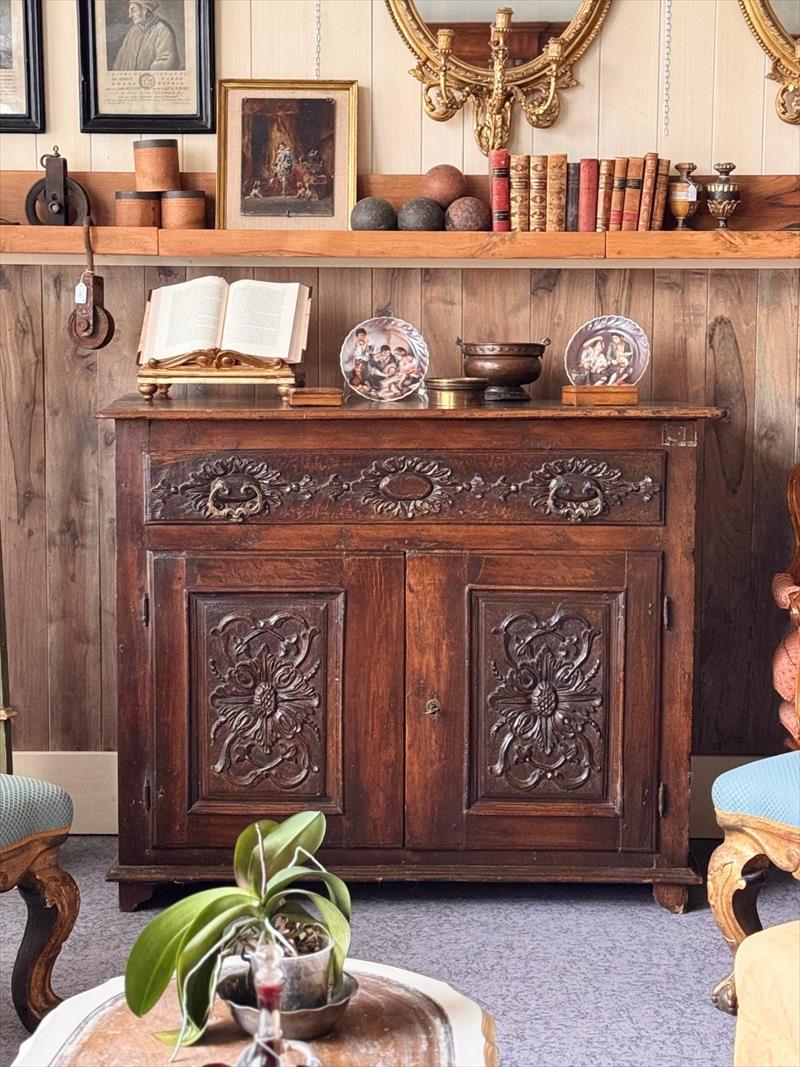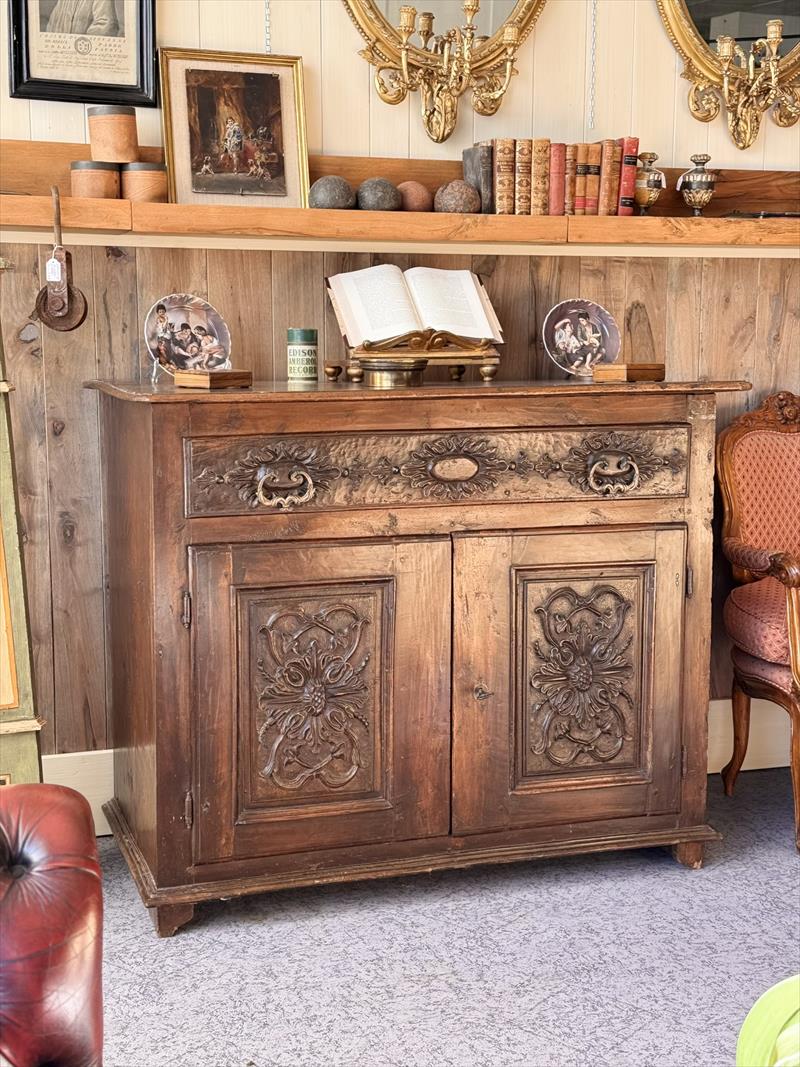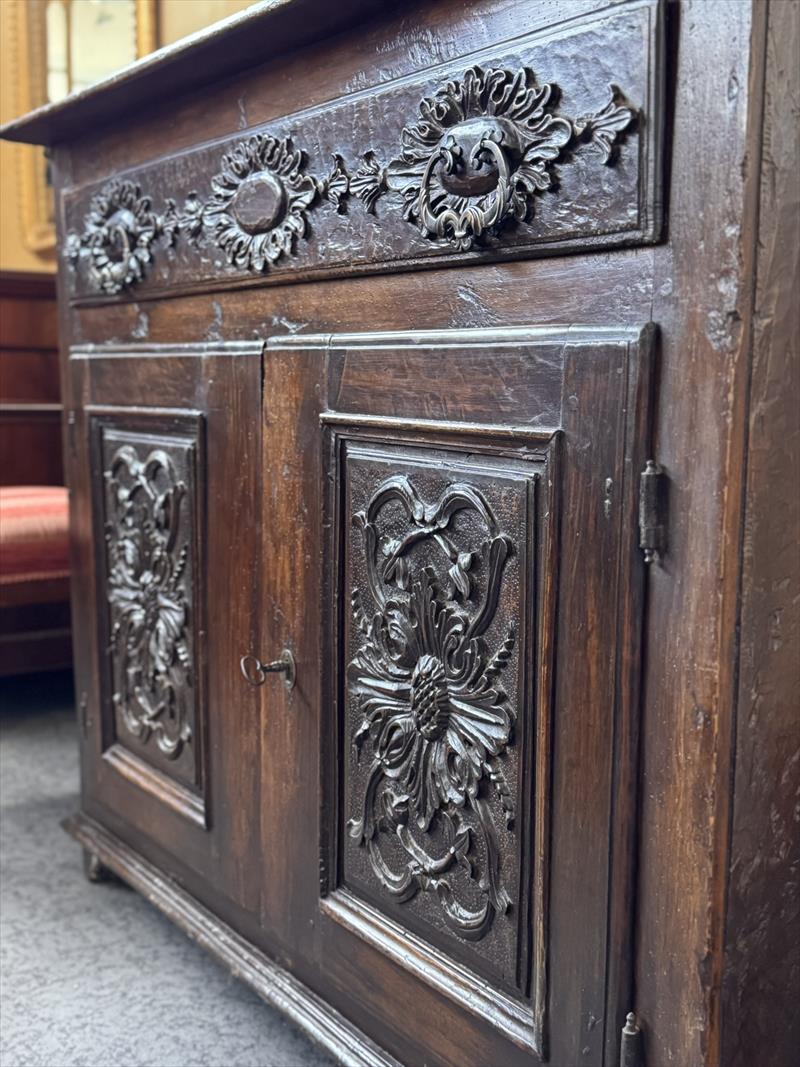Rare and refined solid walnut sideboard, with two doors and a drawer, made in Friuli in the early 17th century—a transitional period between the austere forms of the Renaissance and the early expressions of the Baroque.
An authentic example of “cultivated” rustic furniture, typical of the artisanal tradition of pre-Alpine Friuli—a historical borderland between the Germanic and Latin worlds.
The purity and austerity of the structure contrast with the richness of the carved decoration, featuring rosettes and vegetal scrolls, which create a vibrant play of depth and shadow across the surface.
The construction techniques—axe and gouge work—are visible in the irregular, roughly hewn surfaces, still marked by the traces of hand tools. The sides, made from single planks of walnut and left plain, reflect the rustic-monastic sensibility of the region.
The drawer front is decorated with three carved rosettes connected by leafy scrolls—a recurring motif in the furniture of the Gemonese and Carnia valleys, considered a true hallmark of origin.
Entirely original and structurally sound, the piece has undergone conservative restoration aimed at preserving its beautiful antique patina, enhancing the authenticity of the materials and the honesty of the handmade construction.
In early 17th-century Friuli, woodworking was largely carried out by artisan workshops that primarily served churches, monasteries, and local parishes. The decorative language of these sacred furnishings—scrolls, rosettes, floral patterns, cartouches—naturally found its way into civil furniture as well, especially in rural noble residences or parish settings.
This sideboard, sober yet expressive, can fit seamlessly into historical interiors but also engages naturally with minimalist spaces, acting as a strong focal point full of character and history.
A rare piece, comparable to examples held in major regional museums—such as the Museo Carnico in Tolmezzo and the Ethnographic Museum of Friuli in Udine—intended for collectors and connoisseurs seeking an ancient work of art that distills the essence of history into the living strength of wood and the charm of a deep, time-worn patina, with tones ranging from warm amber to the darkest browns—colors that only centuries can shape.
- Material: solid walnut wood
- Size: cm 130 x 67 x 108 h
- Condition: Restored
- Period: 17th century
- Style: Baroque
- State: Optimal conditions





